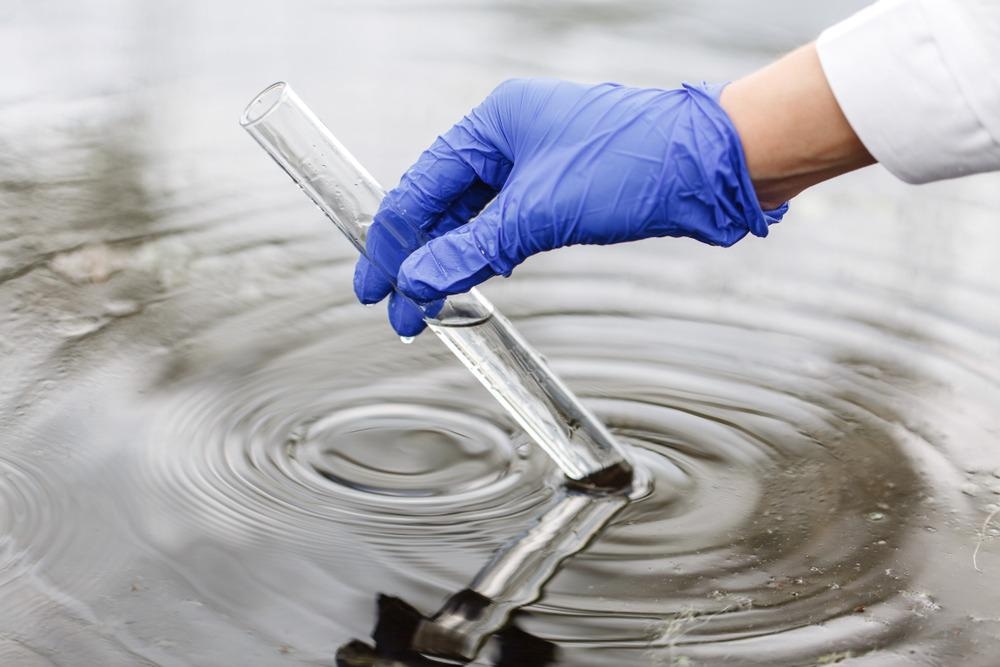Solar-mediated evaporation technologies have promising prospects in seawater treatment. However, the limited capacity of a single treatment of seawater and polluted salt causes a threat to these technologies.

Study: Carbon fiber coated by quinoa cellulose nanosheet with outstanding scaled salt self-cleaning performance and purification of organic and antibiotic contaminated water. Image Credit: IVASHstudio/Shutterstock.com
In an article published in the journal Scientific Reports, the authors developed a carbon fiber coated quinoa cellulose nanosheet (CFQC)-based multifunctional evaporator with good purification and self-cleaning properties, with promising commercial applications.
Photothermal Conversion Materials
Clean water and energy supply have become challenging in remote areas and have negatively impacted socio-economic development. Although several technologies were developed to combat this issue, solar-driven evaporation is a promising strategy to treat seawater cost-effectively with ease of operation. The utilization of solar energy in interfacial evaporation contributes to energy management and prevention of bulk water heat loss due to the thermal foam between bulk water and the water interface.
Photothermal conversion materials have received the research interest of scientists, but most materials come with the shortcomings of complex preparation processes, salt contamination, and difficulty in the scaling-up process, impeding their practical application. Thus, designing and constructing photothermal materials with salt resistance, long-term stability, easy scale-up, and versatility in their application is of critical importance to developing solar-assisted evaporation.
Carbon materials have received considerable attention as photothermal conversion materials due to their excellent chemical stability, abundance in nature, and absorption of solar lights. Furthermore, carbon fibers (CF) have excellent mechanical properties, creep resistance, and good thermal conductivity and hence are extensively used in composite materials.
Despite the advantages of CF and its poor hydrophilicity due to the absence of polar functional groups, they are ineligible for direct usage in solar-assisted evaporation. Nevertheless, various efforts to improve the CF’s hydrophilicity include plasma treatment, treatment with nitric acid, coating with graphene, and hydrothermal treatment.
Material manufacturing in these methods is complex and expensive for wide use, so new treatment methods are required to improve the CF hydrophilicity and subsequent solar-assisted water purification.
Designing and Fabrication of Multifunctional Evaporator
In the present work, a multifunctional evaporator using CF and quinoa bran cellulose nanosheet (QBC) was developed. CF and cellulose composites were treated chemically with various activated agents, including potassium hydroxide (KOH), phosphoric acid (H3PO4), copper chloride (CuCl2), and zinc chloride (ZnCl2). This treatment altered the surface microstructures of CF and cellulose composites and improved their solar evaporation performance.
The Zn-CFQC-based evaporator could treat antibiotic and organic contaminated water and evaporating seawater. Zn-CFQC exhibited excellent salt self-cleaning performance for saline water of 3.5 and 7 weight%.
Research Findings
Transmission electron microscopy (TEM) results reveal the microscopic morphology of the QBC, showing large two-dimensional (2D) flakes and an amorphous structure. The elemental mapping determined by energy dispersive spectroscopy (EDS) revealed that QBC nanosheets are composed of carbon and oxygen elements.
Electron microscopy revealed morphologies of the CFQC-based evaporator and showed the coexistence of carbonized quinoa cellulose nanosheet-coated CF and carbonized cellulose nanosheet, suggesting that pyrolysis at 800 degrees Celsius results in a combination of quinoa cellulose nanosheet and CF via a covalent bond.
QBC coating and pyrolysis treatment resulted in different and rougher morphology in CFQC-based samples with the formation of surface micro-grooves. However, pristine CF did not show much change in surface morphology after the coating and treatment.
The Zn-CFQC surface had small particles and was rough, while other samples only had micro-groves on the surface. This type of uneven surface was favorable for light absorption and evaporation applications.
Furthermore, X-ray photoelectron spectroscopy (XPS) spectra revealed the functional groups on CFQC. The C1s spectra revealed the presence of oxygen-containing functional groups such as carbonyl (C=O/C-O) groups, which helps in improving the hydrophilic ability due to polar groups on the CF surface.
While the oxygen content in CuCl2 and ZnCl2-treated samples increased from 20 weight% to 28 and 42 weight%. However, the same in CFQC, P-CFQC, and K-CFQC remained at 20 weight%. This variation suggests that selected metal chloride activation of the samples increases their oxygen content.
Conclusion
In conclusion, the researchers developed a solar evaporation system consisting of CF and QB cellulose with stable solar evaporation performance. Zn-CFQC evaporation system absorbs 86.95% of light in the ultraviolet-visible-near infrared (UV–Vis–NIR) region, resulting in dry and wet evaporator surfaces reaching a temperature between 62.1 and 124.3 degrees Celsius under one sun.
The unique surface microstructures of CF and cellulose composites attributes to good light absorption and light-to-thermal conversion capability. Zn-CFQC can purify contaminants in polluted water.
Zn-CFQC has salt scale cleaning ability due to its super-hydrophilicity. The CF treatment paves a new way for an eco-friendly and efficient method for solar-driven freshwater production.
Reference
Yang, J., Suo, X., Zhao, J. et al. (2022). Carbon Fiber Coated by Quinoa Cellulose Nanosheet With Outstanding Scaled Salt Self-Cleaning Performance and Purification of Organic and Antibiotic Contaminated Water. Scientific Reports 12, 8777. https://www.nature.com/articles/s41598-022-12889-9
Disclaimer: The views expressed here are those of the author expressed in their private capacity and do not necessarily represent the views of AZoM.com Limited T/A AZoNetwork the owner and operator of this website. This disclaimer forms part of the Terms and conditions of use of this website.